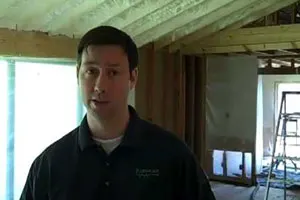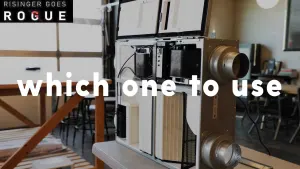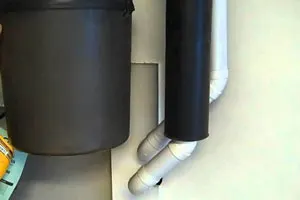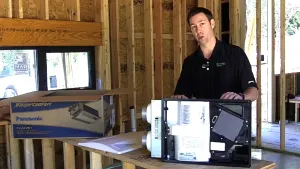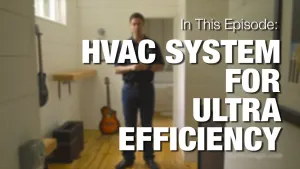Part 3 of the VRF HVAC series is presented by Kristof Irwin. In this video, Irwin covers VRF mechanical systems in general and components, honing in on what constitutes high-performance and then VRF systems and components.
Technology continues to evolve and VRF is no exception. While current products work, they can and will be made to work better. At the heart of our air conditioning systems is the vapor compression cycle which is a very simple and robust process. With VRF we're taking the same input and attempting to get more in the output. Using a sponge and a bucket of water analogy, Irwin shows that if we want to move the water from the pail to the outside, we would take the sponge, fill it, take it outdoors and squeeze. In essence, absorb and release. The same with the VRF system and heat. Inside it's absorbed, outside it's compressed and released. What's happening now is attempting to gain efficiency.
To be high performance, HVAC systems must be in a high-performing enclosure, have accurate load calculations, provide variable-capacity operation and use multiple units, separated by load/use profiles. High performance also means different things geographically. For hot, humid conditions, it must provide explicit humidity control, ventilation air, MUA, and rigorous 3rd party testing. The homeowner is subjected to a variety of loads based on weather balanced with capacity available from the mechanical systems. These loads vary daily and hourly. For these reasons, variable capacity HVAC is the next logical step.
Variable-capacity is seen when an inverter scroll compressor takes energy from the grid and converts it to a variable frequency on the output. The variable frequency compressor is paired up to an electronic expansion valve. The refrigerant comes in and a circuit board to control the refrigerant coming out. There are thousands of pulses per full open/close and control is based on a precision microprocessor. The VRF mechanical component categories include outdoor units, indoor units and control/distribution> Irwin describes the differences between multi-split and mini-split units. Irwin recommends getting very familiar with one manufacturer and their product line. Once you understand their products, it's easy to look at other manufacturers and compare, as they relate to your application.
Finally, you also have as a component, refrigerant distribution and then an opportunity to look at the system as a whole. Accessories are also available for VRF systems including filter boxes, conversion kits, downflow kits, and wind/snow deflectors. Controls include central controllers, wireless controllers, wall controllers, I/O modules, and remote temperature sensing. The controls can be smart, remote access, or based on occupant behavior.

 Share on facebook
Share on facebook Tweet
Tweet Email
Email Share on Linkedin
Share on Linkedin





